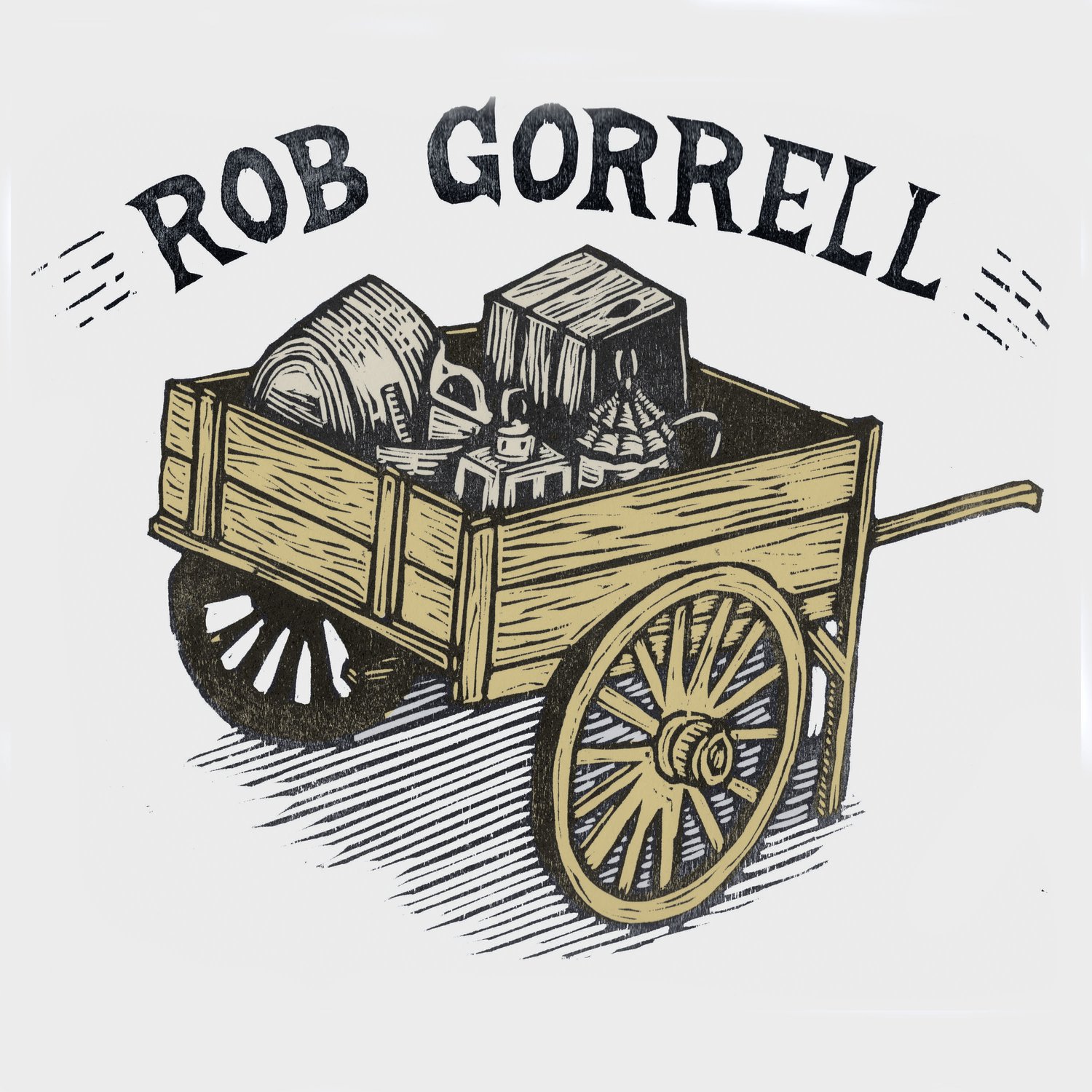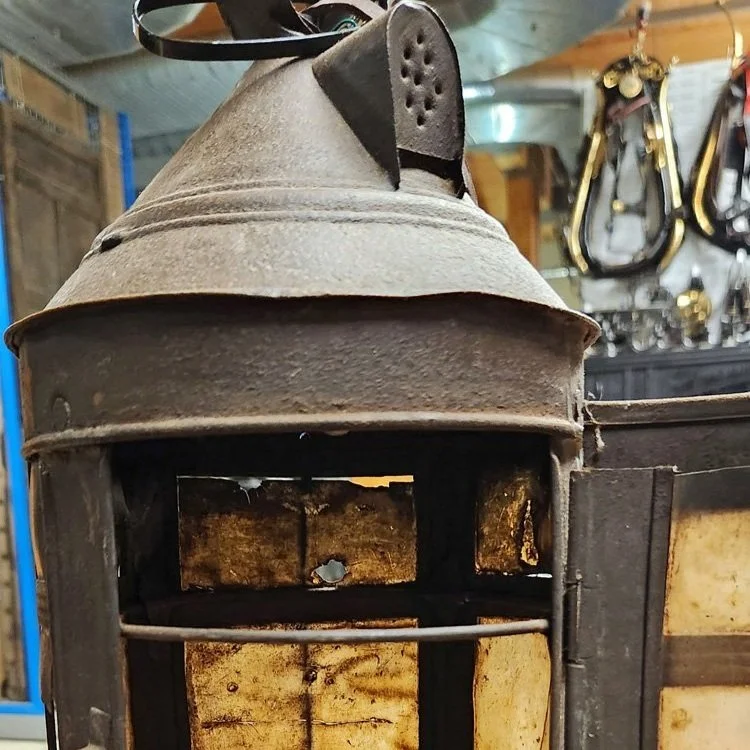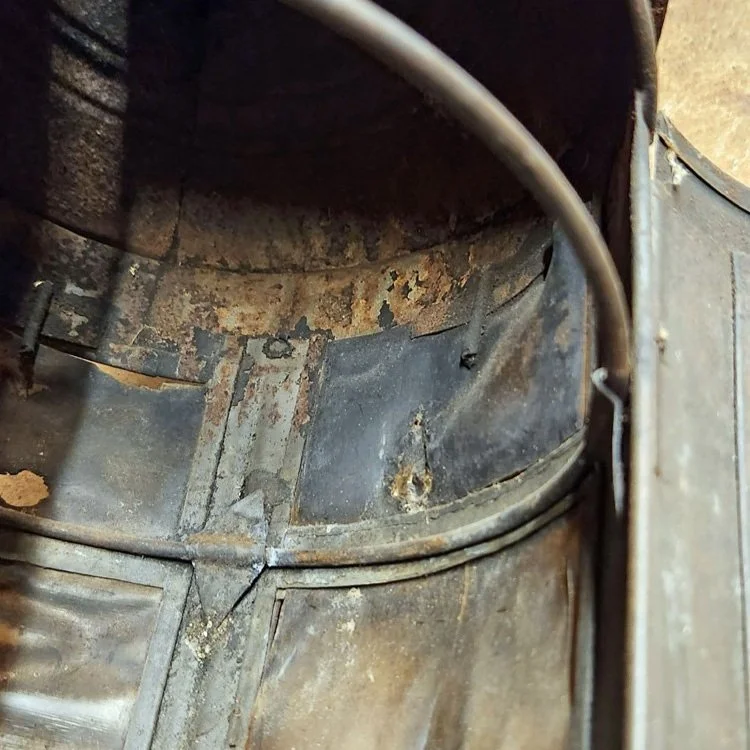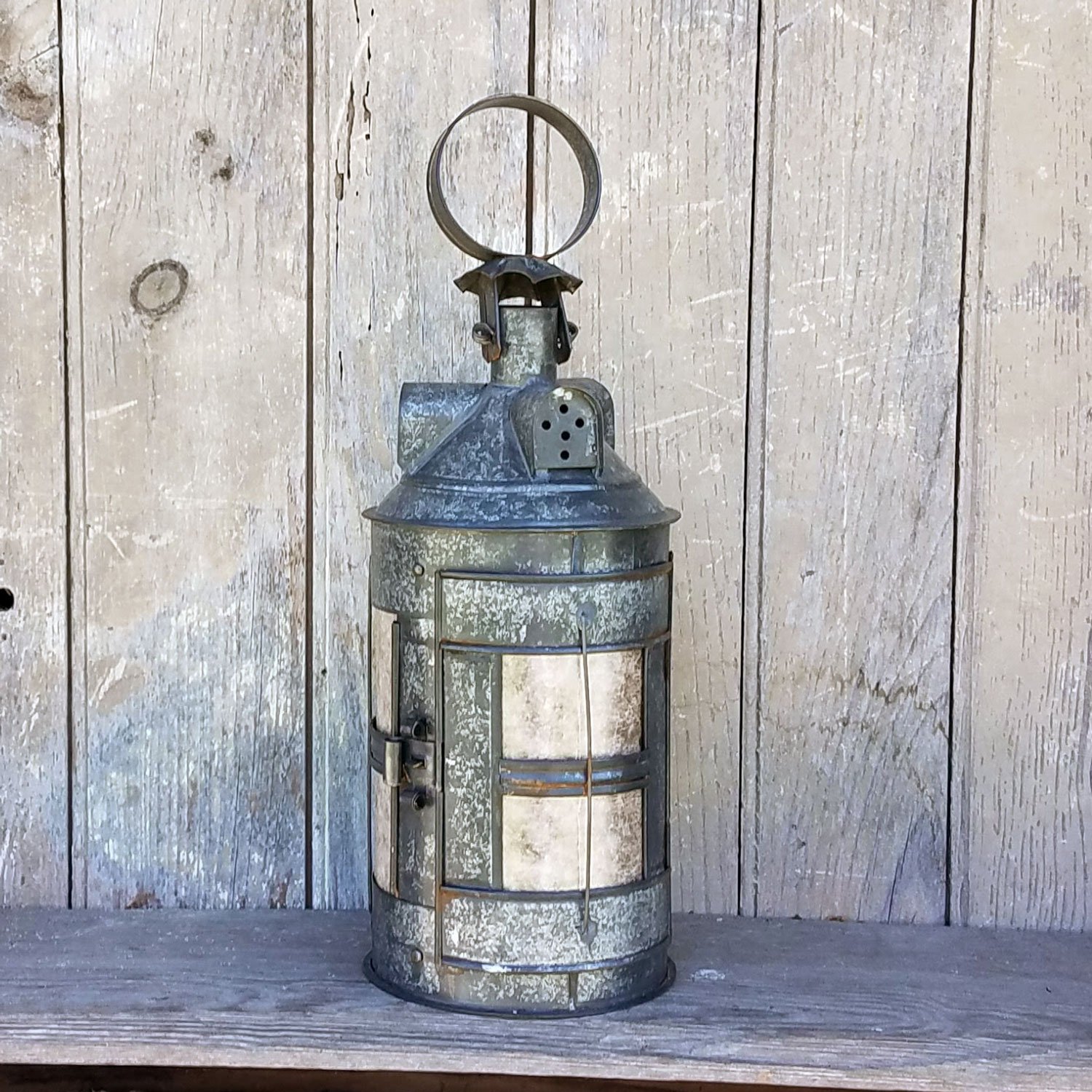Some thoughts on the “Shepherd’s Lantern.”
During a recent study day at the Weald and Downland Living Museum near Chichester, England, I studied an example of the “Shepherd’s Lantern” in the museum’s collections.
This lantern style shows up online and in books on tinware often, and I get requests to make a similar lantern occasionally. So I took the opportunity to study an original up close.
Dating the Shepherd Lantern
Dating tin lanterns is tough. There have been a number of books written about antique tinware and tin lighting, but they are all very vague on dates. Terms are thrown around like “primitive,” “late 18th - early 19th century”
What’s more, the books and articles that did list a date range did not give any documentation to support the dates. So I have been relying mostly on museum information and period artwork to classify date ranges on the lanterns I make.
In his book, Making Fire & Light in the Home, Pre-1820 (Antique Collectors Club, Woodbridge England, 1987), John Caspall states that tin lanterns with dormers became common by the early 19th century. Though some other sources date lanterns with dormers to the mid-18th century, the earliest illustration that I have found showing dormers is dated 1782.
Detail from The Vicar and Moses, 1782, British Museum.
Three things stand out to me in this image of the lantern:
The top ring appears to be the early style of wire ring, as opposed to the flat tin ring seen in most lanterns after the mid-18th century.
The dormers and what look like pierced tin designs are on the top cone. That is unusual based on what I have learned so far.
The horn panes are shown to be very transparent and large.
The Shepherd’s Lantern is a sturdier design than what is shown in the Vicar and Moses print. The lantern I studied at the Weald Museum is heavily built for rough use. Notice the very large triple bead below the dormers on the top cone. Also, the interior wire ring about 3/4 of the way up on the inside of that lantern. This, along with the wired edges of the top and bottom body rings and the wired edges on the verticle dividers, gives the lantern a high level of stiffness compared to just folded edges.
One of the most frustrating things about being limited to photographs in books and online of original tin lanterns is that rarely are photos shown of the interior of the lantern. Often one has to make some big assumptions about how an original lantern is constructed based on previous experience and similar documented lantern designs. For example, in the photograph below, I noticed these details that were different than I expected.
The inner support ring is attached with diamond-shaped brackets to the body of the lantern.
The same ring goes all the way around the lantern and does not stop at the edges of the door opening.
The ends of the verticle wires that act as guards over the horn panes are just stuck through the holes and peened over on the inside. I had been trying to solder them against the outside of the lantern. Who knew?
The rivets are very close to the ends of the verticle dividers.
All of these little details don’t seem like a big deal. But if you are trying to create something that is as close to the original design as can reasonably be done, then how a ring is fastened or how wide the groove that holds the horn panes matters.
Being allowed to handle and study original tinware in a museum collection is a great opportunity for me to see and think about how the original maker worked, what shortcuts he or she took, and how the pattern was developed and executed. It allows me to continue improving my understanding of traditional tinware's history and development.
As soon as I get caught up on my current orders, I plan to rework the pattern for the Shepherd’s Lantern I make now and incorporate all of the changes I learned about from the lantern at the Weald and Downland Living Museum.
The image below shows the most recent version of my interpretation of a Shepherd’s Lantern.
I would like to thank Julian Bell, Curator at the Museum and all of the staff at the museum for the opportunity and the great work they are doing with the Museum.
Keep watching for my posts to see how I use this new information to improve the design and accuracy of my Shepherd’s Lantern.





